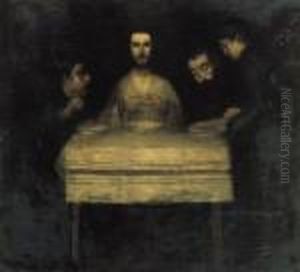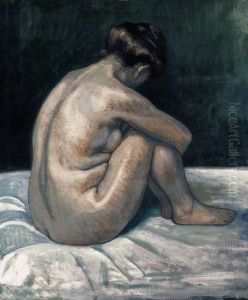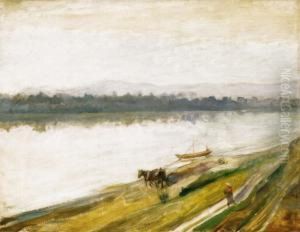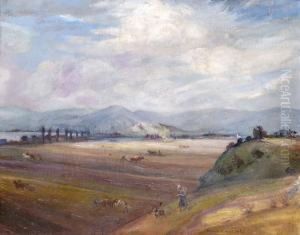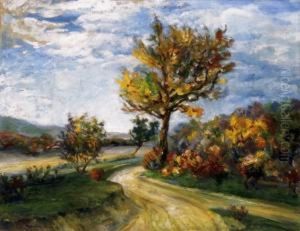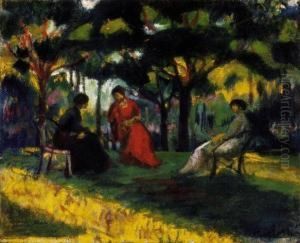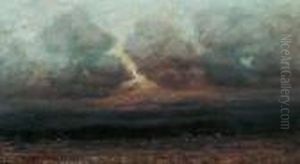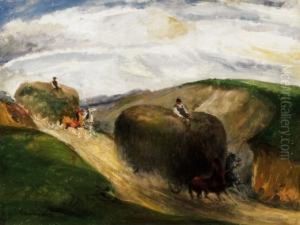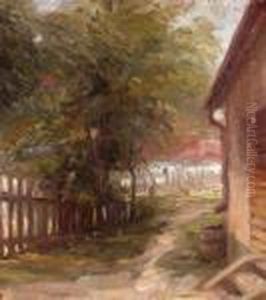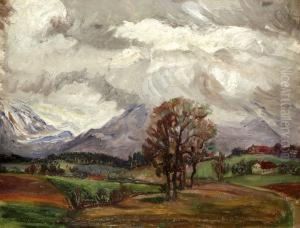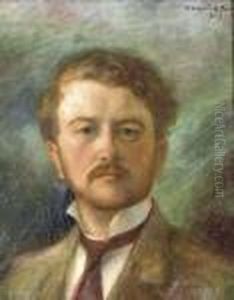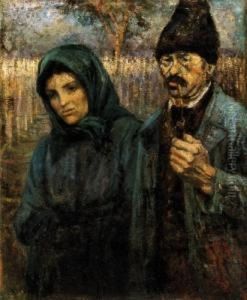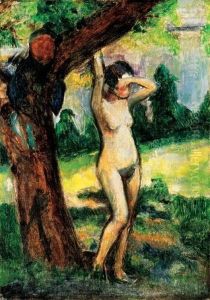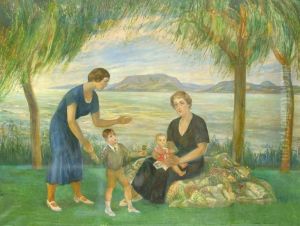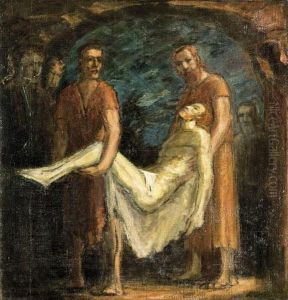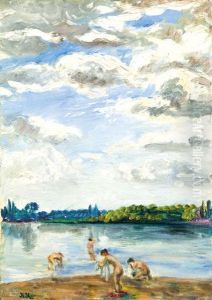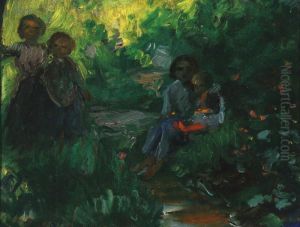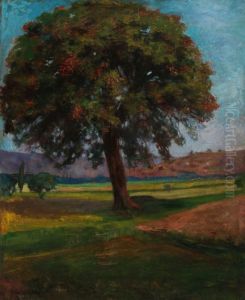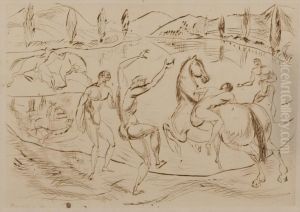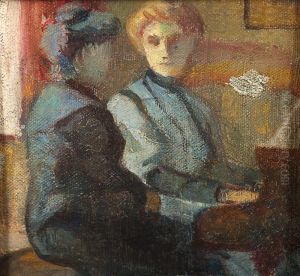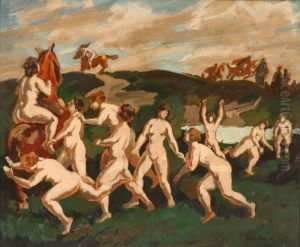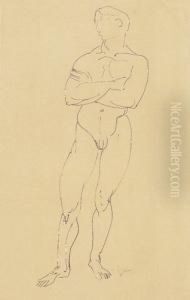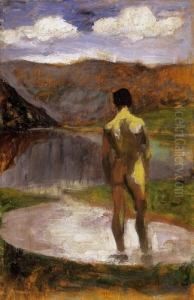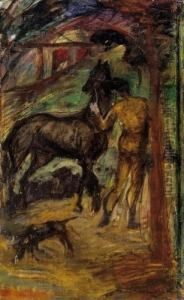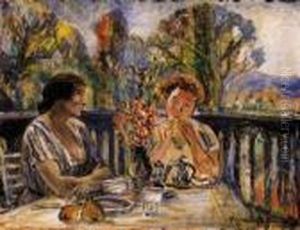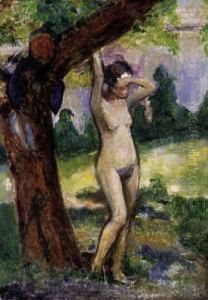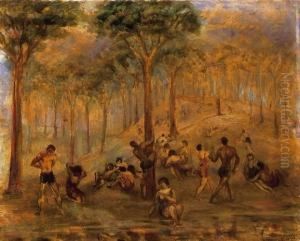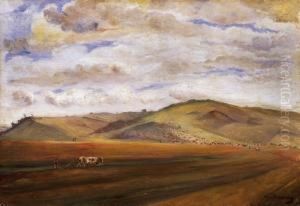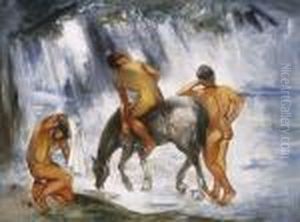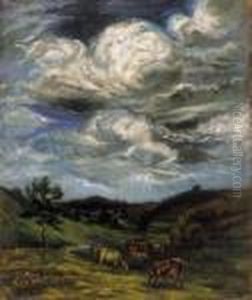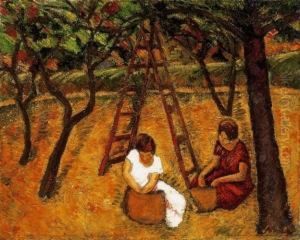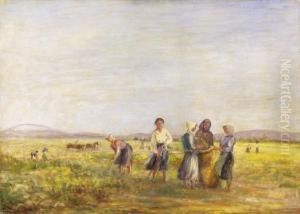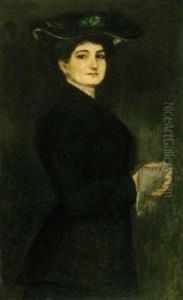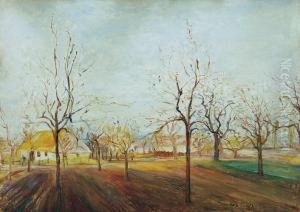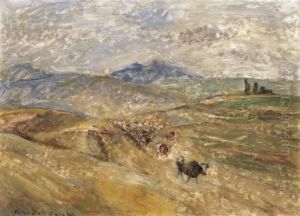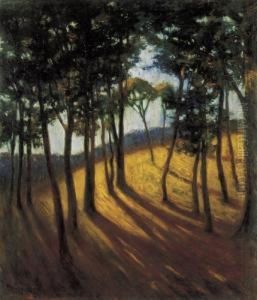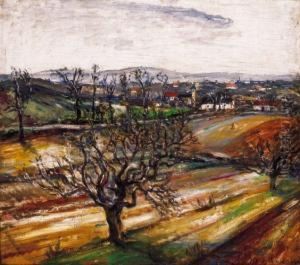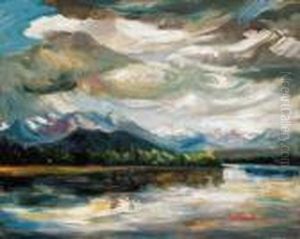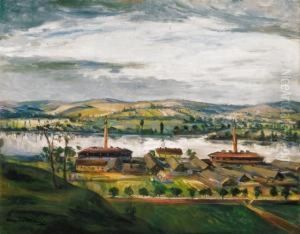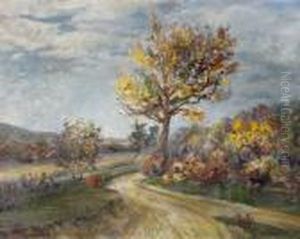Josef Karoly Kernstok Paintings
Josef Karoly Kernstok was a Hungarian painter and graphic artist, born on January 13, 1873, in Budapest, which was then part of the Austro-Hungarian Empire. He is considered one of the leading figures in early 20th-century Hungarian art and was a founding member of the influential artist group 'The Eight' (Nyolcak), which was crucial in introducing modern artistic movements to Hungarian art.
Kernstok's early works were influenced by the Symbolist movement and Art Nouveau styles. He studied at the Hungarian University of Fine Arts in Budapest and later at the Académie Julian in Paris, where he was exposed to the burgeoning trends of Fauvism and Expressionism. The impact of these movements is evident in his bold use of color and form, which became more pronounced after his return to Hungary.
In 1909, Kernstok played a pivotal role in the formation of 'The Eight,' which sought to break away from the academic traditions of Hungarian art. The group was inspired by various contemporary European art movements, including Impressionism, Post-Impressionism, and the works of Cézanne. They emphasized the importance of personal expression and the integration of modern life into art.
During the interwar period, Kernstok's art took a turn towards a more nationalist and folkloric theme, reflecting the political and social changes in Hungary at the time. He incorporated elements from traditional Hungarian art and culture, which resonated with the rise of nationalism across Europe. This phase of his work included murals and large-scale public commissions, which allowed him to express his artistic vision on a grander scale.
Kernstok's contributions to Hungarian art were not limited to his paintings. He was also an influential teacher, art critic, and organizer of exhibitions that introduced Hungarian audiences to contemporary European art trends. Unfortunately, his career was cut short by the outbreak of World War II and the subsequent occupation of Hungary.
Josef Karoly Kernstok died on April 27, 1944, in Budapest, leaving behind a legacy that played a significant role in shaping modern Hungarian art. His works are displayed in various museums and galleries in Hungary and internationally, attesting to his lasting impact on the art world.
